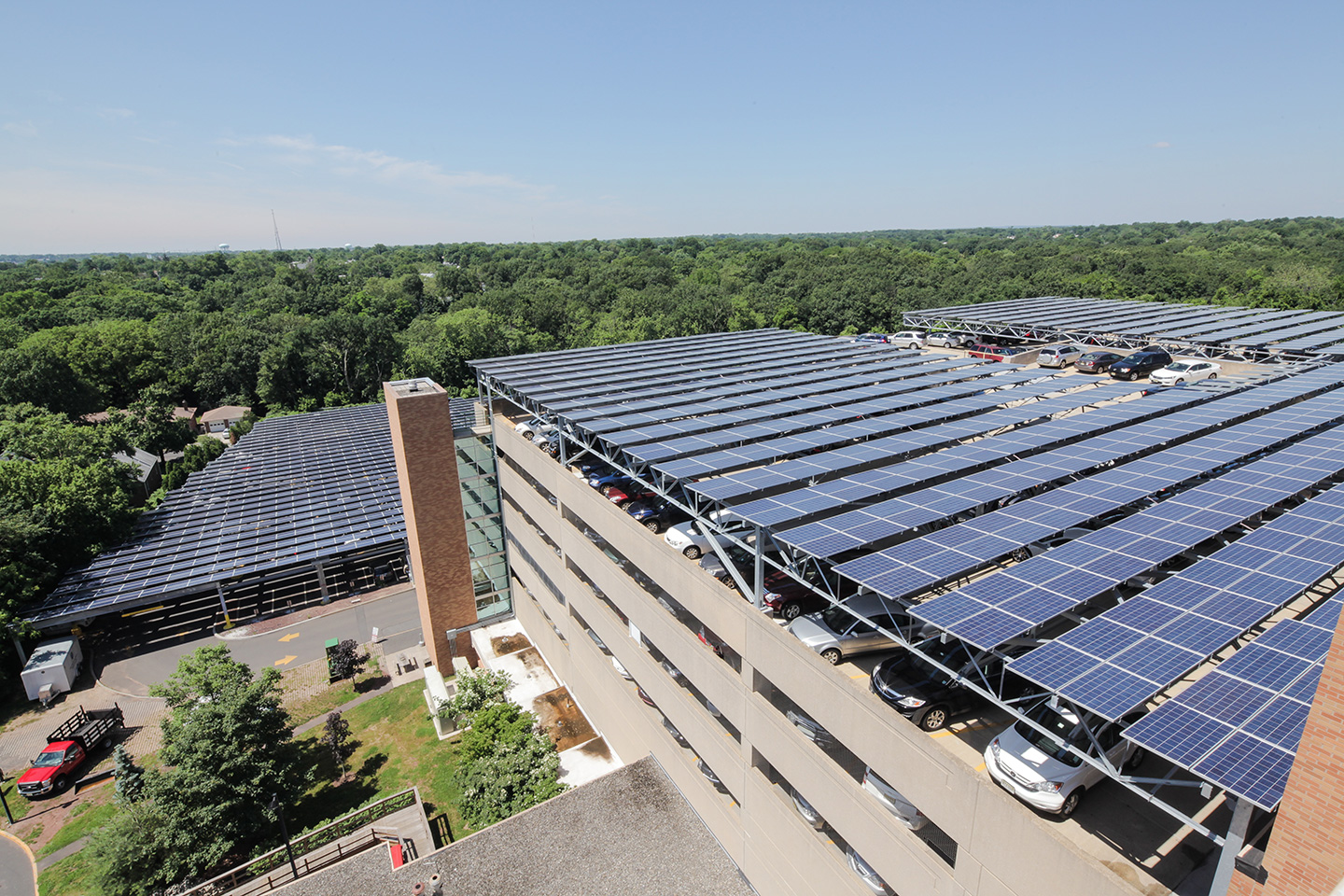New York City releases approximately 55 million metric tons of carbon dioxide equivalents (MtCO2e) every year, greater than the emissions of the entire country of Norway. This carbon dioxide output is the equivalent of driving back and forth between the earth and the sun 734 times over the next 223,000 years. But what do these numbers really mean and what actions can we take to help them?
Greenhouse Gases and Climate Change
These emissions are often referred to as greenhouse gases (GHGs), which are the leading forces behind global warming and climate change. GHGs contribute to the greenhouse gas effect, where energy from the sun is trapped in our atmosphere by these gases rather than reflected back into space, and the Earth subsequently warms.
One important idea to note is that while global warming and climate change are often used interchangeably, they are unique terms:
- Global warming refers to the idea that the average temperature of the Earth is increasing
- Climate change is the effect global warming has on the planet, often seen as extreme changes in climate or weather
In an effort to curb the release of additional greenhouse gases into the atmosphere, companies and individuals can conduct GHG inventories to determine their emissions over a specified period. An inventory sets a baseline for the emissions impact of an organization and helps identify opportunities to reduce emissions.
How to Conduct a GHG Inventory
The first step of conducting a GHG inventory is to set a boundary. What does the organization do? Do they manufacture products? Transport goods? Occupy offices? This boundary determines what sources of emissions are associated with the organization.
Next, data on the activities of the organization must be gathered, mainly energy consumption, which is broken into three scopes:
- Scope 1: Onsite combustion, for example, a smokestack on a building
- Scope 2: Indirect emissions, for example, purchased electricity
- Scope 3: Value chain emissions, for example, employee commuting
Scopes 1 and 2 are considered operational control emissions—activities the organization has direct control over. Scope 3 is value chain emissions—activities that are associated with the organization but that it does not have control over. For example, a company can’t dictate how its employees decide to commute.
Next, select the proper tool to convert these numbers into emissions. These are established methodologies for accurately and transparently calculating emissions.
- For Scopes 1 and 3, The Environmental Protection Agency (EPA) provides many valuable tools for conversions
- For Scope 2, the Emissions & Generation Resource Integrated Database ( eGRID) can be used to determine location-based electricity emissions based on the electrical grid
Understanding your emissions is the first step in decreasing them. By looking at all the scopes of consumption in your organization, you can determine what emissions your organization is responsible for and where there are opportunities for change.”
David Nowak
Using GHG Inventories to Initiate Change
Understanding your emissions is the first step in decreasing them. By looking at all the scopes of consumption in your organization, you can determine what emissions your organization is responsible for and where there are opportunities for change. A GHG inventory also helps quantify and compare different actions, such as the benefits of electrifying fleet vehicles versus installing renewable energy.
Use your boundary to establish operational control and make positive adjustments in the Scope 1 and 2 areas where you have the responsibility and ability to do so. For example, an organization with many factories may adjust the temperature in these buildings to make them more energy efficient. Small swaps like this could be a solution to positively impacting our environment.
Scope 3 emissions are more challenging to address, but there are actions that can influence behaviors. Examples of these include an organization installing electric vehicle chargers or promoting a carpooling program to reduce employee commuting emissions.
 Installing solar panels is one example of how an organization could adjust to become more energy efficient.
Installing solar panels is one example of how an organization could adjust to become more energy efficient.
Follow Best Practices When Conducting a GHG Inventory
These best practices are essential to conducting a successful GHG inventory:
- Establish a clear boundary
- Understand which emissions sources are material
- Use quality data
- Find the right emissions methodology or tool
- Document your findings and be transparent
Interested in learning more? You can conduct your personal GHG inventory using the EPA’s GHG calculator and translate the calculated emissions into more concrete terms such as number of trees planted, vehicle miles driven, and even number of smartphones charged using the EPA’s GHG Equivalencies Calculator.
Brainstorm actions you can take to cut your emissions and reduce the impacts of global warming and climate change—every bit makes a difference.
You can read more about GHG emissions reporting in Kimberly Meersma's blog "Three Steps for Greenhouse Gas Emissions Reporting."